So much can go wrong with poorly planned meetings. They can become tiring, uninspiring, and inefficient. In a global survey of 31,000 professionals conducted by Microsoft in 2023, workers identified “inefficient meetings” and “too many meetings” as two of the top 3 productivity killers in the workplace.
Effective meeting planning can help solve these problems. It can help cut down unnecessary meetings and result in better quality interactions.
However, a critical part of effective meeting planning involves finding a time that works for everyone. But that can be a stressful, time-consuming task. The back-and-forth emails can take forever, and good luck finding a time over a series of phone calls.
And that’s where meeting scheduling tools come in.
The right meeting scheduling tool can make all that stress and frustration disappear.
In this article, we'll talk about:
- How your team can benefit from using a meeting scheduling tool
- How to choose one that works well for them
- A rundown of five of the best meeting scheduling tools out there
What are meeting scheduling tools?
Meeting scheduling tools help people find a suitable time to meet, share meeting invites and agendas, and send timely reminders.
At a high level, meeting schedulers use information from participants' digital calendars to find and suggest a meeting time that works for everyone. These tools can be standalone software or integrated with communication, project management, and other collaboration tools.
If your team constantly has to get on a call with co-workers, work teams, or clients, meeting schedulers can streamline their meeting scheduling processes. It can help them focus on more important aspects of the meeting and free up more time for productive work.
Streamlining how teams find time to meet can also have a long-run positive impact on your company's meeting culture.
Why you should start using a meeting scheduling tool
Manually trying to find a time can eat into your team's or client's morale before the meeting has even started. Your client may consider your processes obsolete and start having cold feet about doing business with you.
And as for your team, the stress of manual scheduling and meeting at an inconvenient time could dampen their psyche for the meeting and affect their engagement. When this happens, meetings become a waste of everyone's time.
Meeting schedulers let everybody spend more time on other important aspects of the meeting, such as:
- Planning the meeting agenda
- Defining meeting goals
- Preparing meeting materials and presentations
How to choose the best meeting scheduling tool for your team
There's no one-size-fits-all when it comes to choosing a meeting scheduling tool. Most businesses focus on the Return On Investment (ROI) when buying software, but you should consider other equally important factors. Here is a list of some of these key factors:
- Features: Aside from automating meeting scheduling, what else does your team need from a meeting scheduler? Some scheduling tools can send meeting reminders, sync your calendar across multiple devices, record meetings, and even take notes. Knowing just which features are enough is essential, as most times, the more features a tool has, the pricier it is. And you certainly don't want to pay for more features than your team needs when there are cheaper alternatives that’ll work just fine.
- Pricing: Some meeting scheduling tools have both free and paid plans. But most free plans have limited features and may need more key functionalities like calendar integration, data security and privacy, and dedicated customer support. Learning about your team's budget and the features they consider must-haves can help you get good value for your money.
- Security & Privacy: If you deal with corporate clients, using a meeting scheduler that offers enterprise-level security can reinforce trust in your company. Some meeting scheduling tools provide enterprise-level security and privacy by default, but you may have to pay for it on others.
- Integrations: This is about how well a meeting scheduler can connect and communicate with your team's existing tools. For example, if your team uses Google or Microsoft calendar apps, you must choose a scheduling app that integrates seamlessly.
- Customer Support: The level of customer support is always a huge determining factor when buying software. Look out for how responsive their customer support is and how truly helpful their support resources, like help center articles are. Online review platforms, like G2 and Trustpilot, are good sources of credible, use-based reviews.
This list isn't exhaustive, but it covers the most important things to consider when choosing a meeting scheduler.
Now, let's dive into our review of the top five meeting scheduling apps out there.
The top 5 meeting scheduling tools in 2023
The tools we’ll be looking at are:
- Motion
- Calendly
- Doodle
- Google Calendar
- Microsoft Outlook
Let’s get right into it.
1. Motion
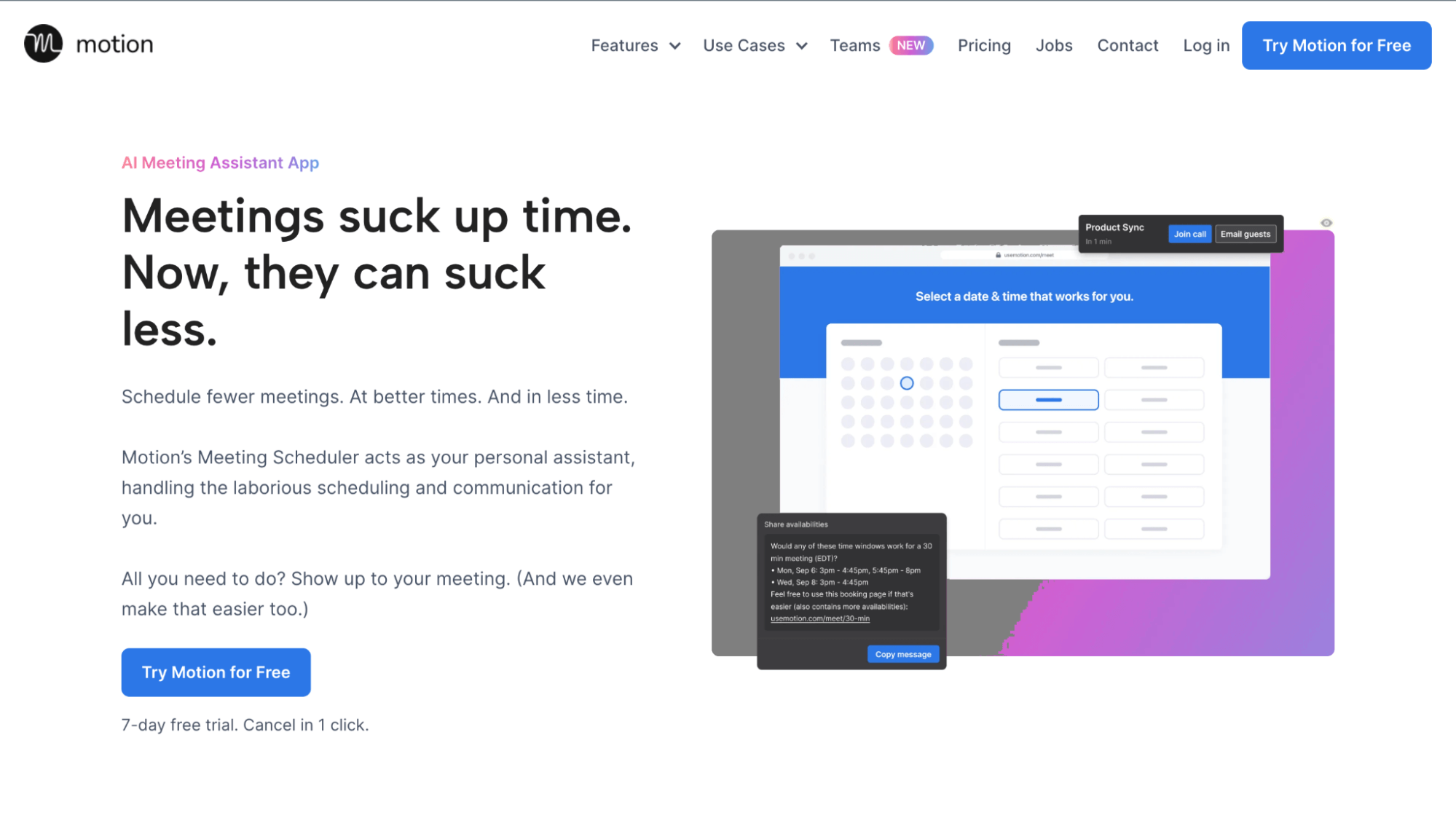 |
Motion is an AI productivity app that helps individuals and teams better plan and manage their meetings, tasks, and work calendars. It provides a meeting assistant that replaces long email threads and back-and-forth calls with an integrated team calendar and a simple booking page.
Motion's automation and AI capabilities help teams free up time for more meaningful work and get more out of their workdays. Motion is intuitive, and new users don't have to waste time figuring out how to use it.
Key Features
Motion's meeting scheduling assistant lets you:
- Send meeting confirmation messages via email and text
- Send follow-up emails and reminders after the schedule is confirmed
- Automatically detect participants' timezone and avoid booking clashes
- Indicate your meeting preferences and dedicate timeslots on your calendar specifically for meetings
- Customize your booking page with brand images and logos
- Connects multiple private calendars, like Google, Outlook, and iCloud calendars, to sync events and tasks
- Embed on your personal or company website
- Integrate with your video conferencing and virtual meeting tools
Motion shines even brighter when achieving a good work-life balance. It lets your team set a daily meeting limit and preferences such as "afternoon-meetings only" and "no-meeting Fridays."
Platforms
Motion is available on:
- Web
- Mobile
- Browser extensions (Chrome and Microsoft Edge)
Integrations
Motion offers native integrations with popular collaboration and communication apps such as:
- Google Calendar
- Microsoft Outlook 365
- Gmail
- Microsoft Teams
- Zoom
- Google Meet
You can also integrate Motion with your own custom or industry-specific tools with the Motion API. Check out the API documentation.
Pricing
Motion offers a 7-day free trial for new users but doesn’t offer a free plan beyond the trial period. Below are Motion's pricing and plans:
- Individual: $34 per month (billed monthly) or $19 per month (billed annually)
- Team: $20 per user per month (billed monthly) or $12 per user per month (billed annually)
Motion appears highly-priced than the other tools on this list. That's because it is more than a simple meeting scheduler app —it’s a full-suite productivity software. In addition to meeting scheduling, it offers:
- Project management
- Automated daily schedule builder
- Automated task prioritization
- Automated productivity manager
Here’s a look into what Motion’s meeting scheduler looks like:
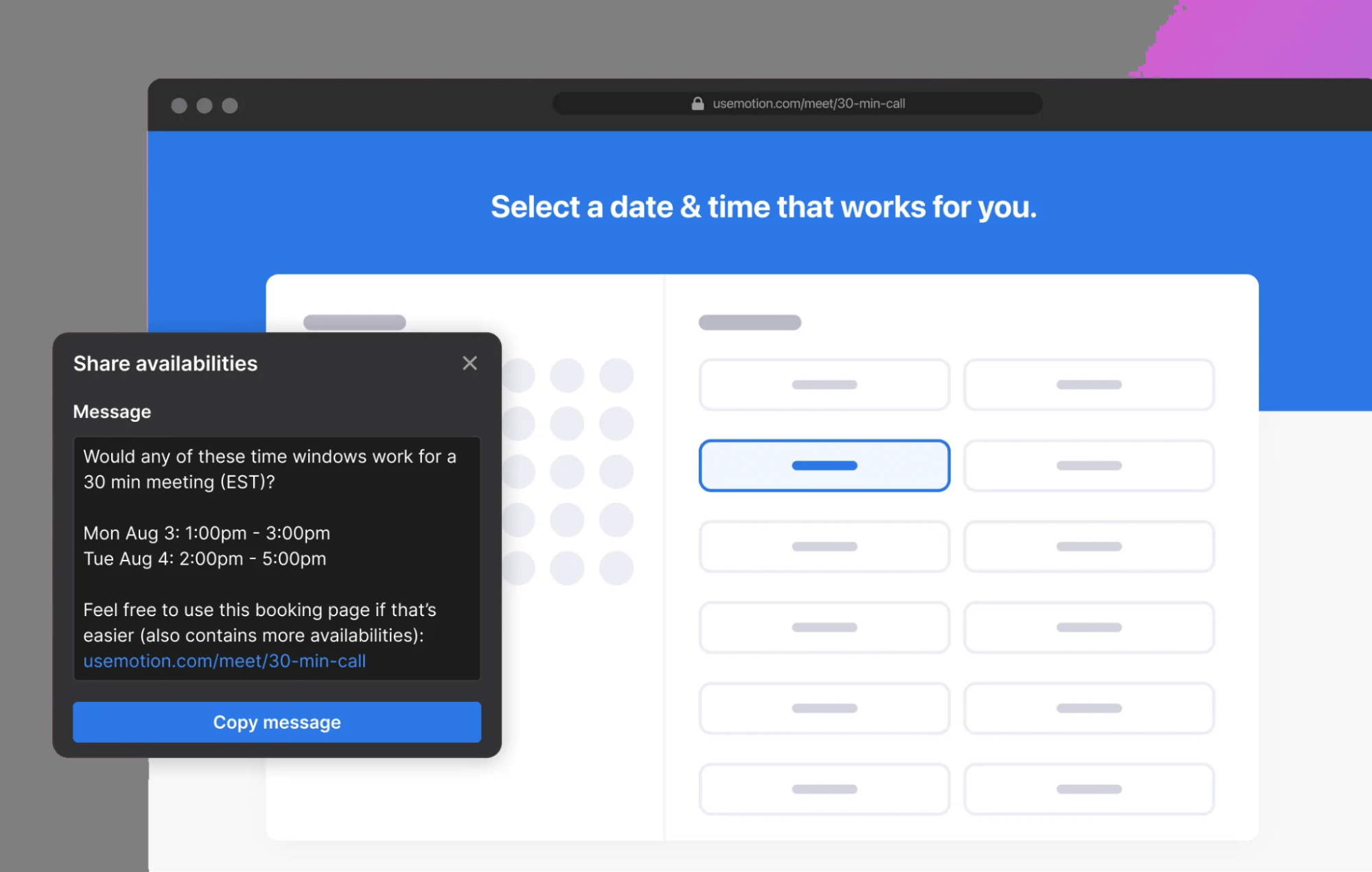 |
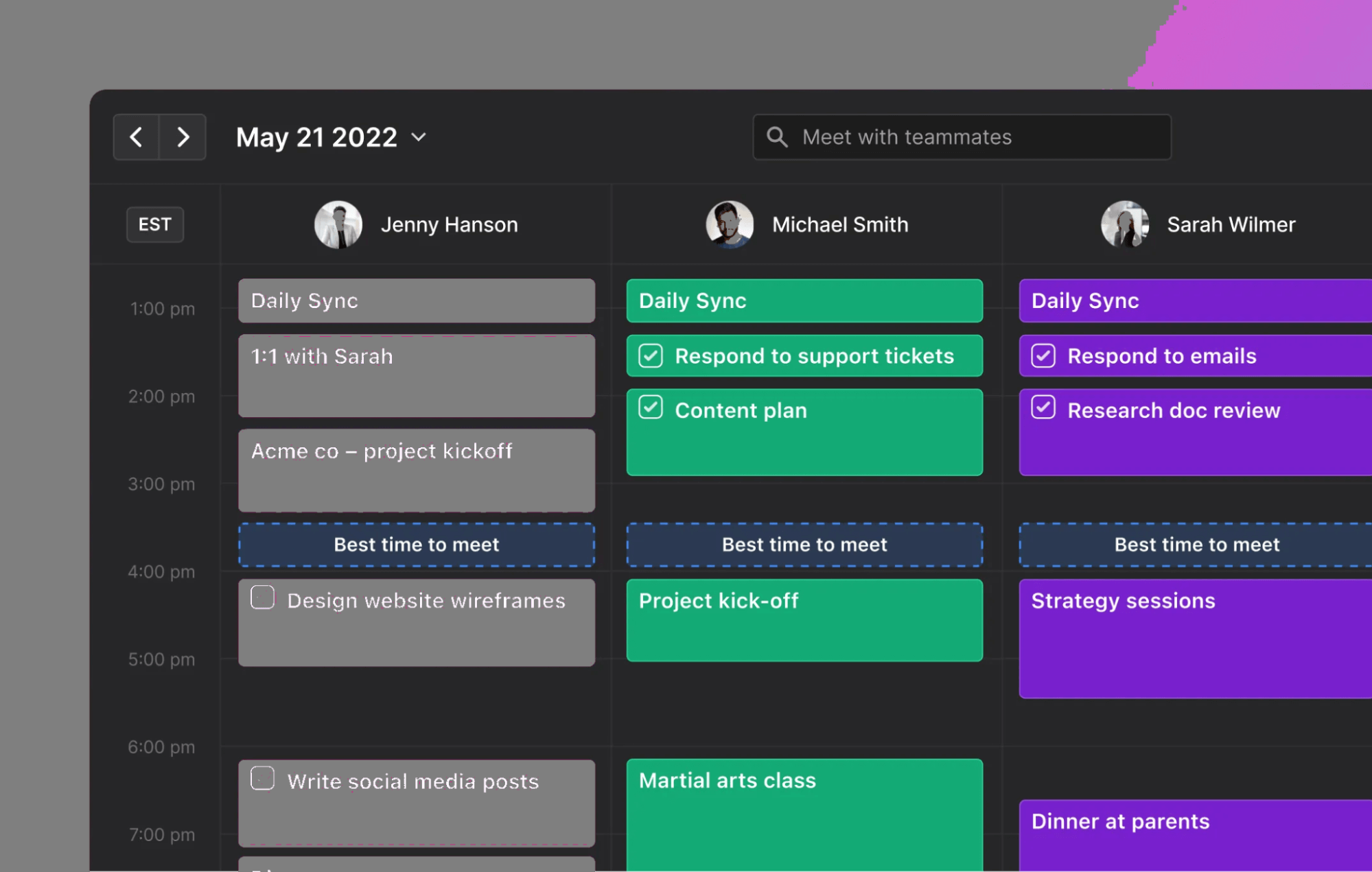 |
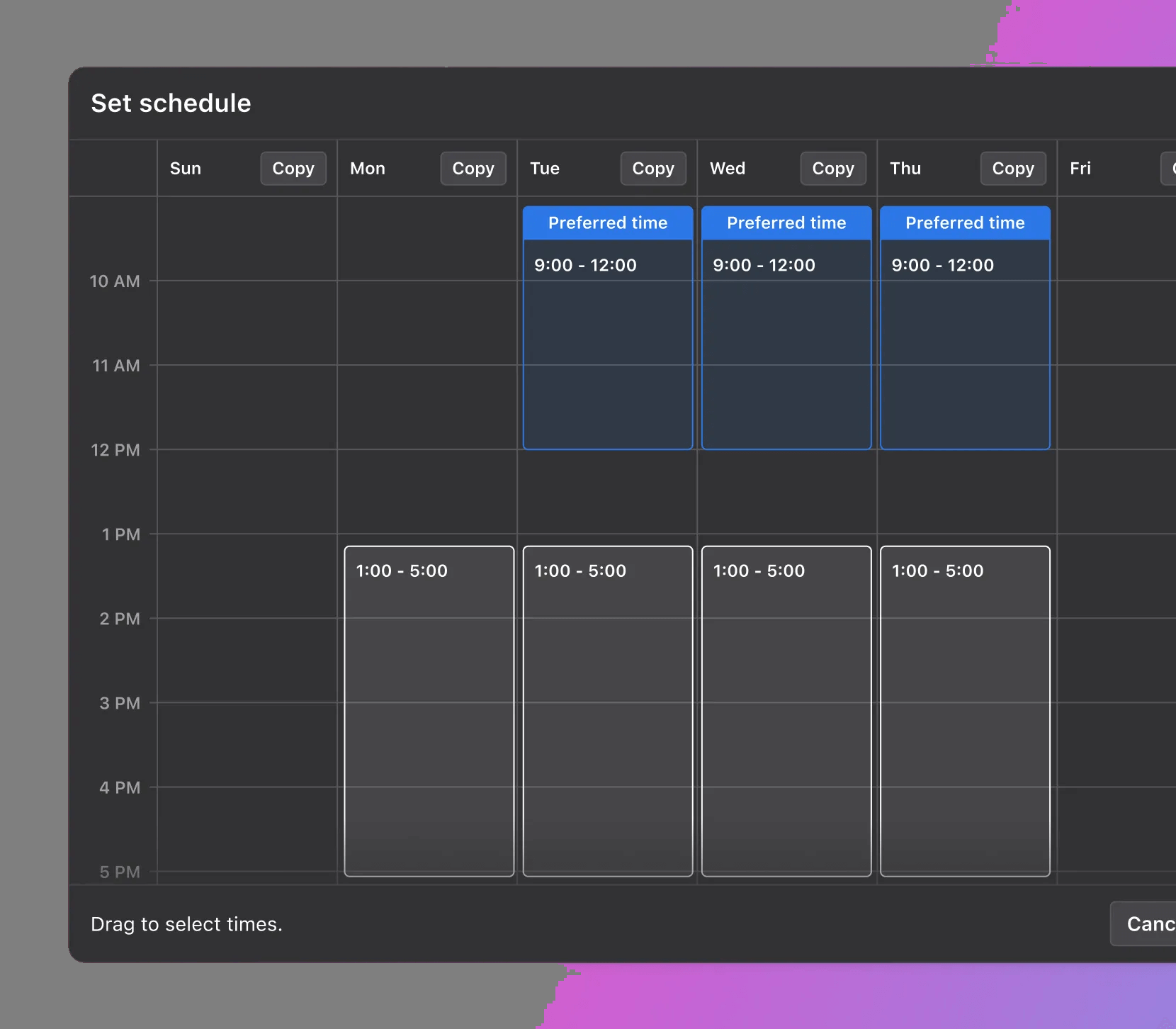 |
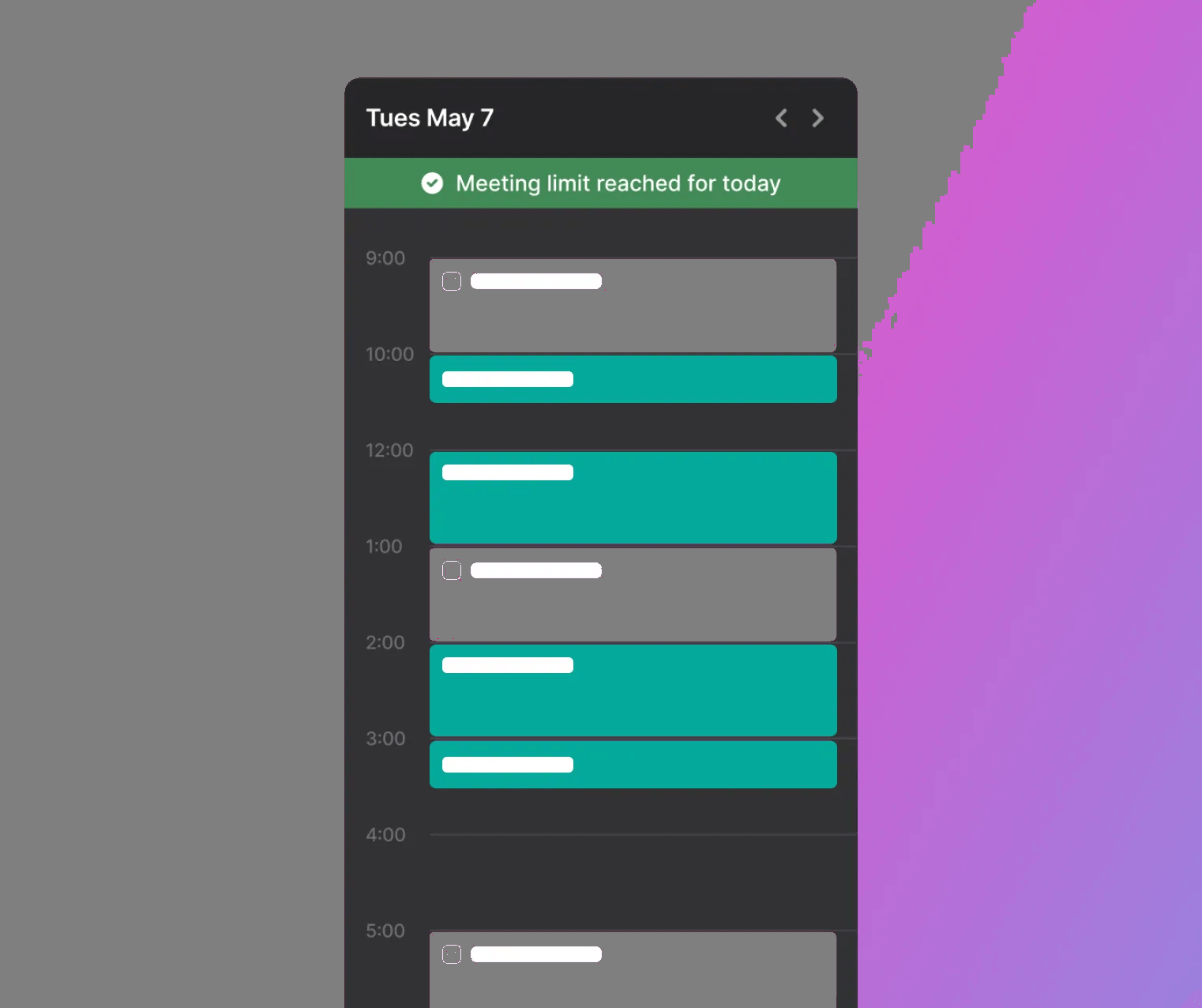 |
If you or your team depend heavily on your calendars to manage your time, meetings, and tasks, Motion can help you manage all of those tasks in one place.
You can learn more about Motion or start a 7-day free trial.
2. Calendly
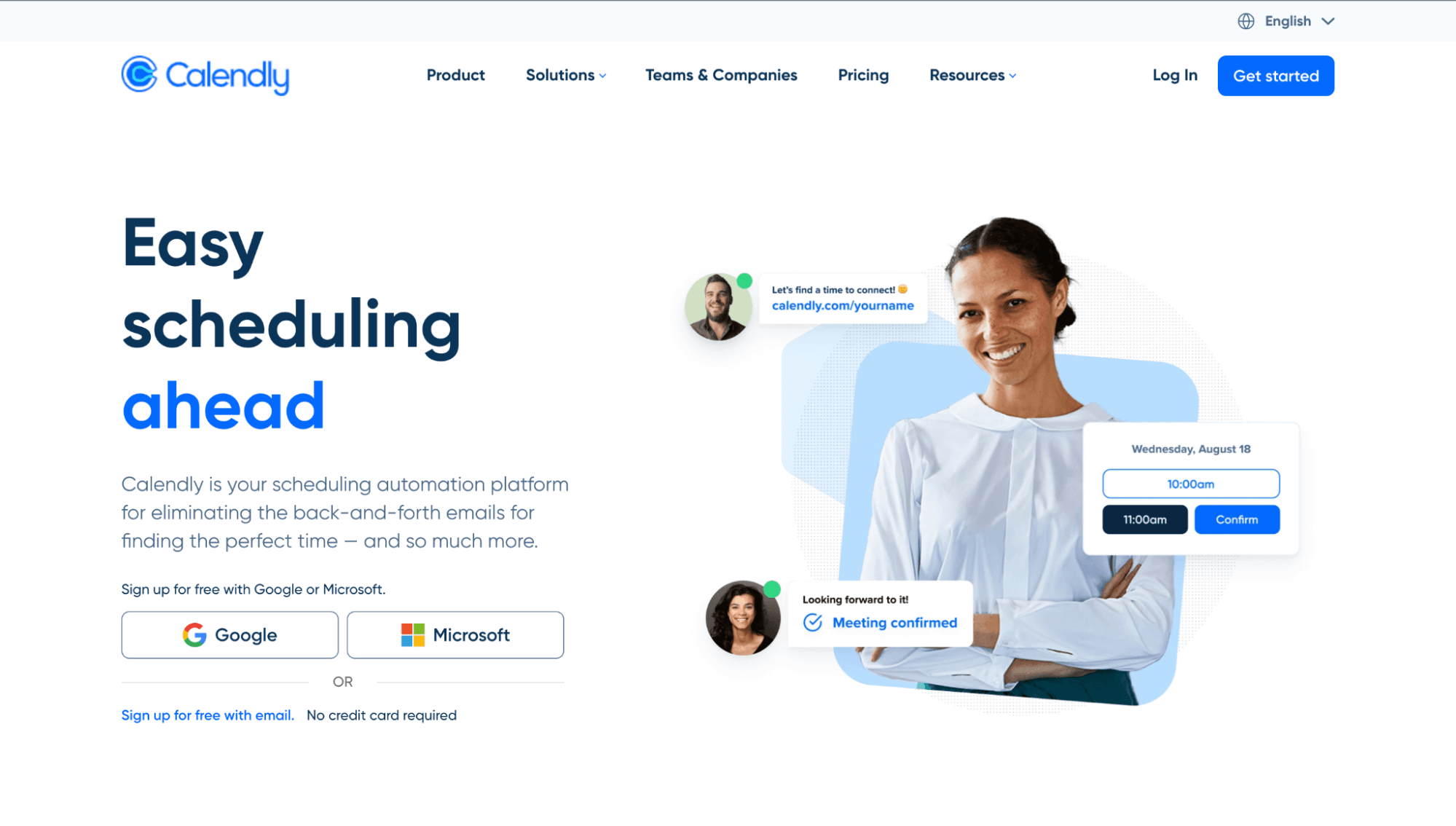 |
Calendly is an online appointment scheduling platform that lets teams save time by escaping the stress of manual scheduling. Its meeting availability feature allows teams to create meeting blockers within their calendar for different times of the day. It offers a clean user interface and is easy to use.
To use Calendly, you must create an account, link your calendar, and then set your meeting availability and preferences. Calendly customizes your booking page with your preferences and provides a shareable link that people can always use to book a meeting with you.
Key features
Some of Calendly's key features include:
- Multiple calendar options for different purposes, such as personal, work, and travel calendars.
- Meeting availability and preferences
- The option to send booking page invite to others from within the calendar
- Past meeting history
- Booking confirmation notification
However, Calendly may not be as great if you want a scheduler that helps you organize your days. For instance, all event types are in the same color, making it hard to make out the different event types at a glance.
Platforms
- Web
- iOS and Andriod
- Browser extensions
Integrations
Calendly also integrates with popular communication tools, such as:
- Google Calendar
- Outlook Calendar
- Google Meet
- Zoom
- Microsoft Teams
It also offers integrations with different Productivity, Sales, Marketing, and Payment tools.
Pricing
In addition to a free basic plan, Calendly offers four paid plans:
- Essential: $8 monthly per person
- Professionals: $12 monthly per person
- Teams: $16 monthly per person
- Enterprise: Up to 30 persons per year. You'll need to talk to sales to get a quote.
Here’s an inside glimpse of Calendly:
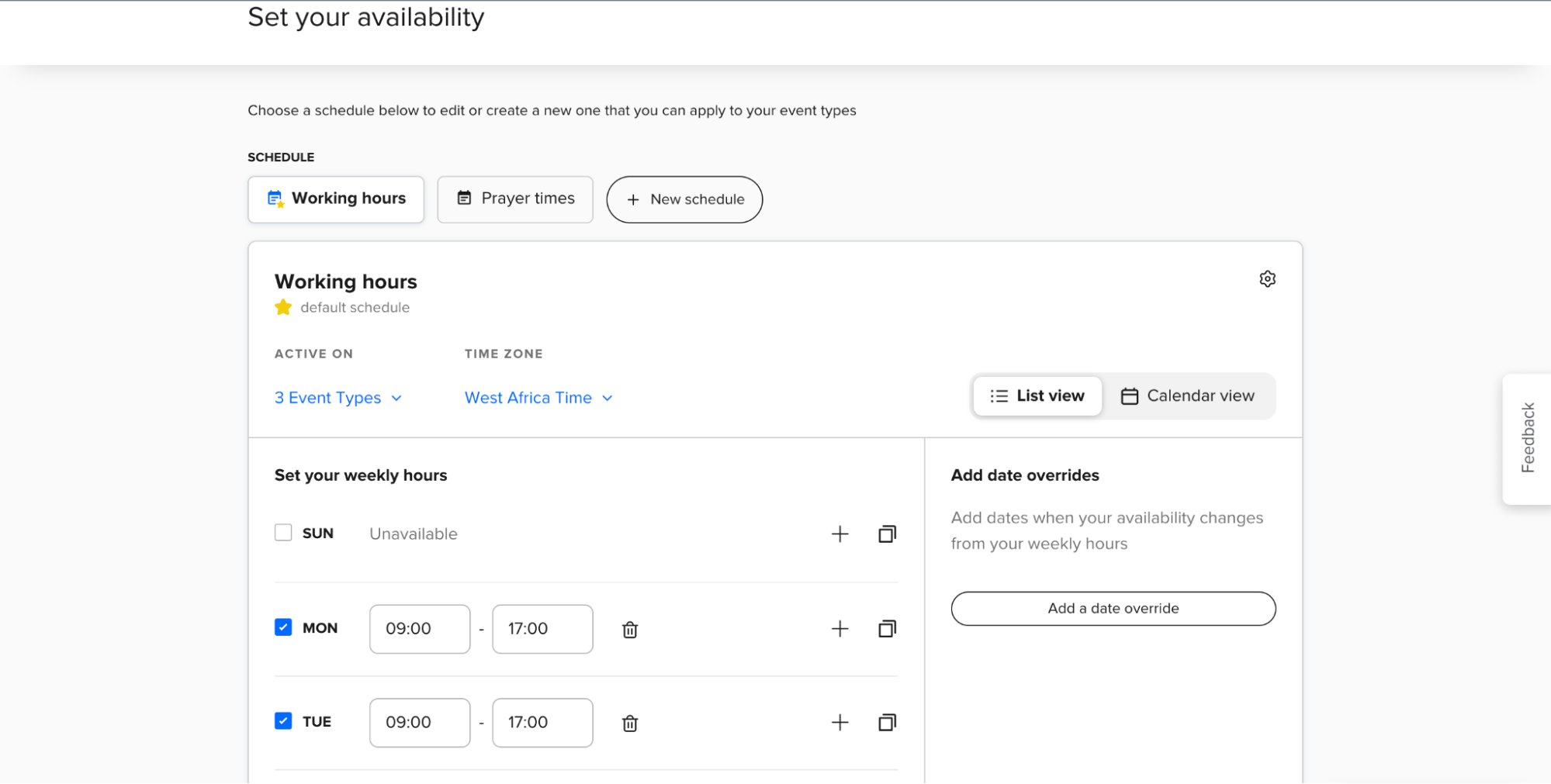 |
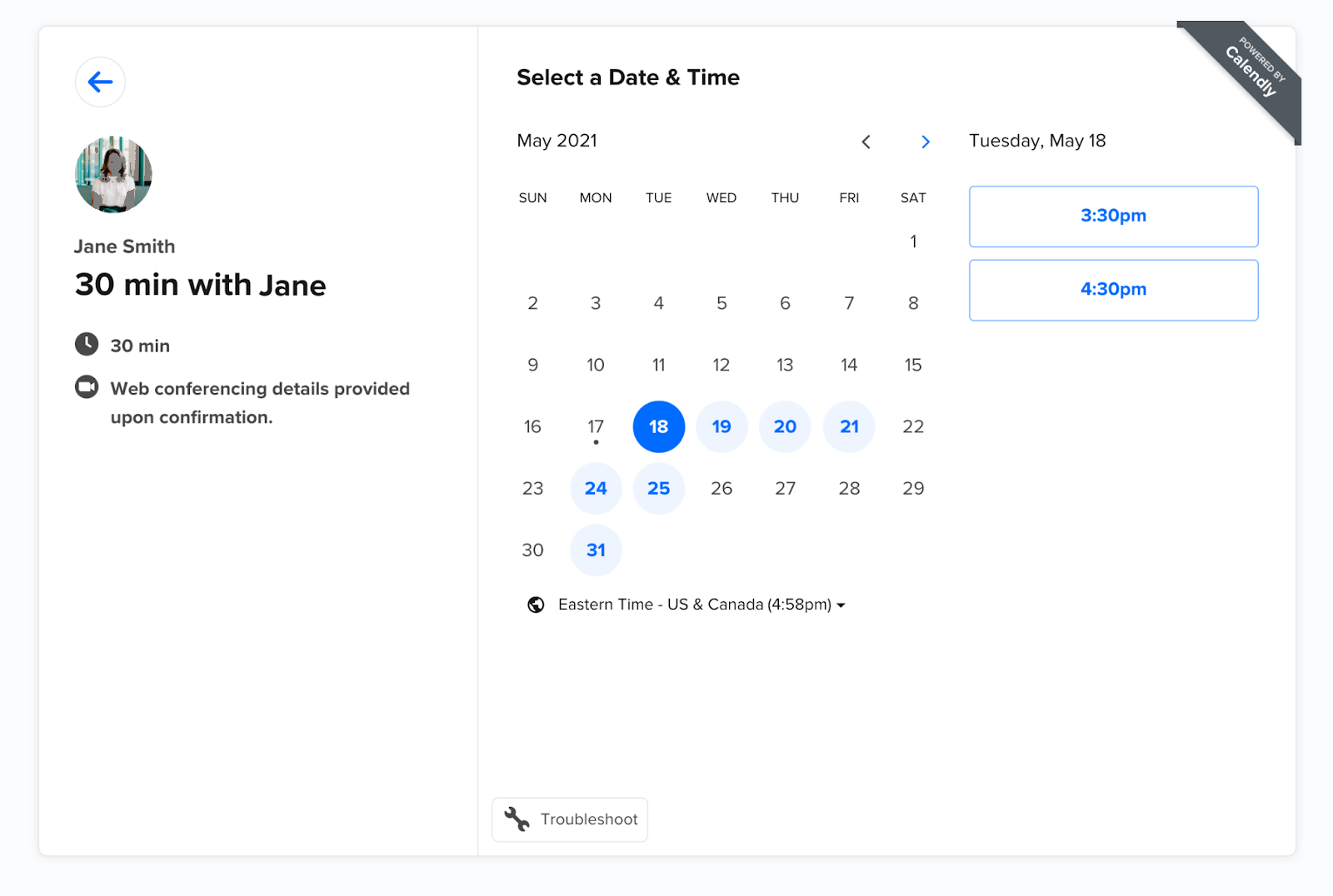 |
3. Doodle
 |
Doodle is a powerful scheduling software for individuals and teams. In addition to letting you share your calendar and booking page, it lets you share your availability via a poll. Doodle then uses the poll results to suggest meeting times that work best for everyone.
To use Doodle's poll feature, you create an account and set your meeting availability via a poll before inviting others to do the same by sharing the link with them.
This unique approach is a fun way to schedule meetings with teammates and people you know. But it can quickly get distracting if they go through the routine more than once daily.
It may also not be a great way to book meetings with corporate clients, C-level executives, and generally busy people.
Key features
Below are some of Doodle's key features:
- Create a poll that up to 1,000 invitees can participate in
- Get an individual and team booking page
- Send meeting invites
- Send email and SMS reminders
- Receive notifications for booked meetings
Integrations
Doodle offers integrations with the most popular calendars and virtual meeting tools, such as:
- Google Calendar
- Outlook Calendar
- Zoom
- Google Meet
- Webex
- Microsoft Team
Platform
- Web
- iOS and Android
Pricing
In addition to a free one-user plan, Doodle offers three paid plans:
Pro: $14.95 per month, 1 user, billed monthly
Team: For 5 users for $19.95 per user per month, 5 users, billed monthly
Enterprise: For 20+ users. You'll need to contact sales for a quote.
Here’s an inside glimpse of Doodle:
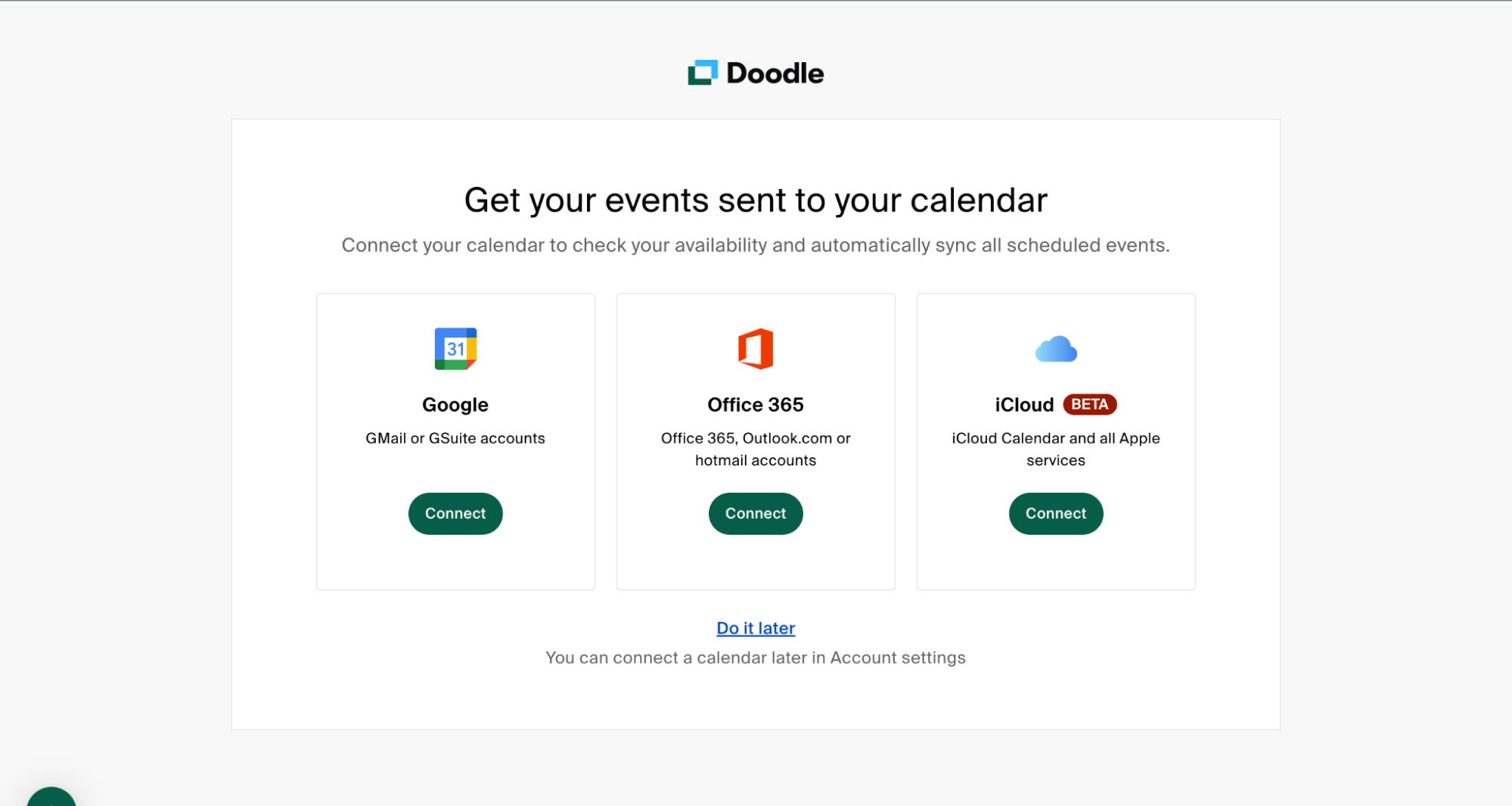 |
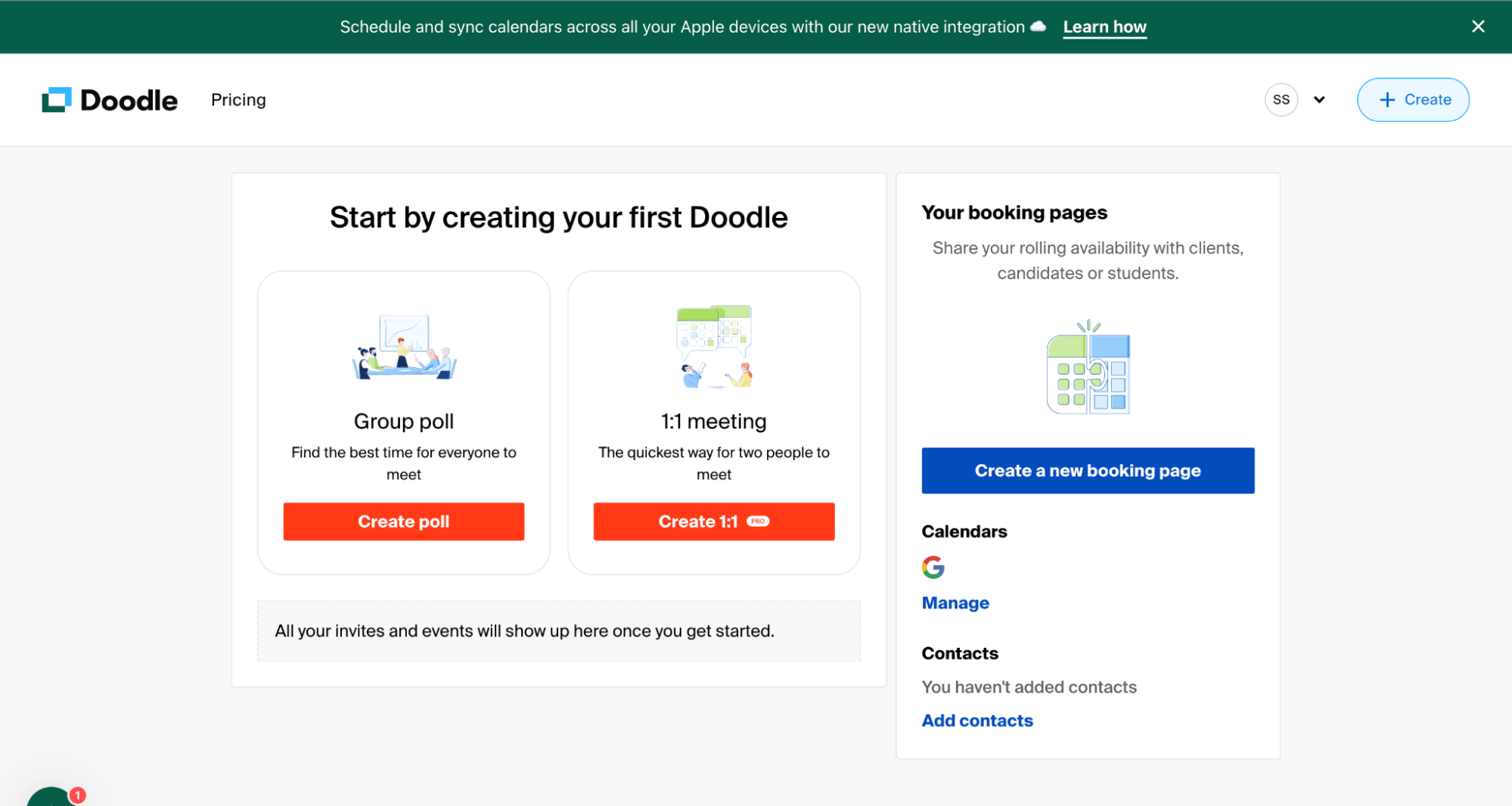 |
4. Google Calendar
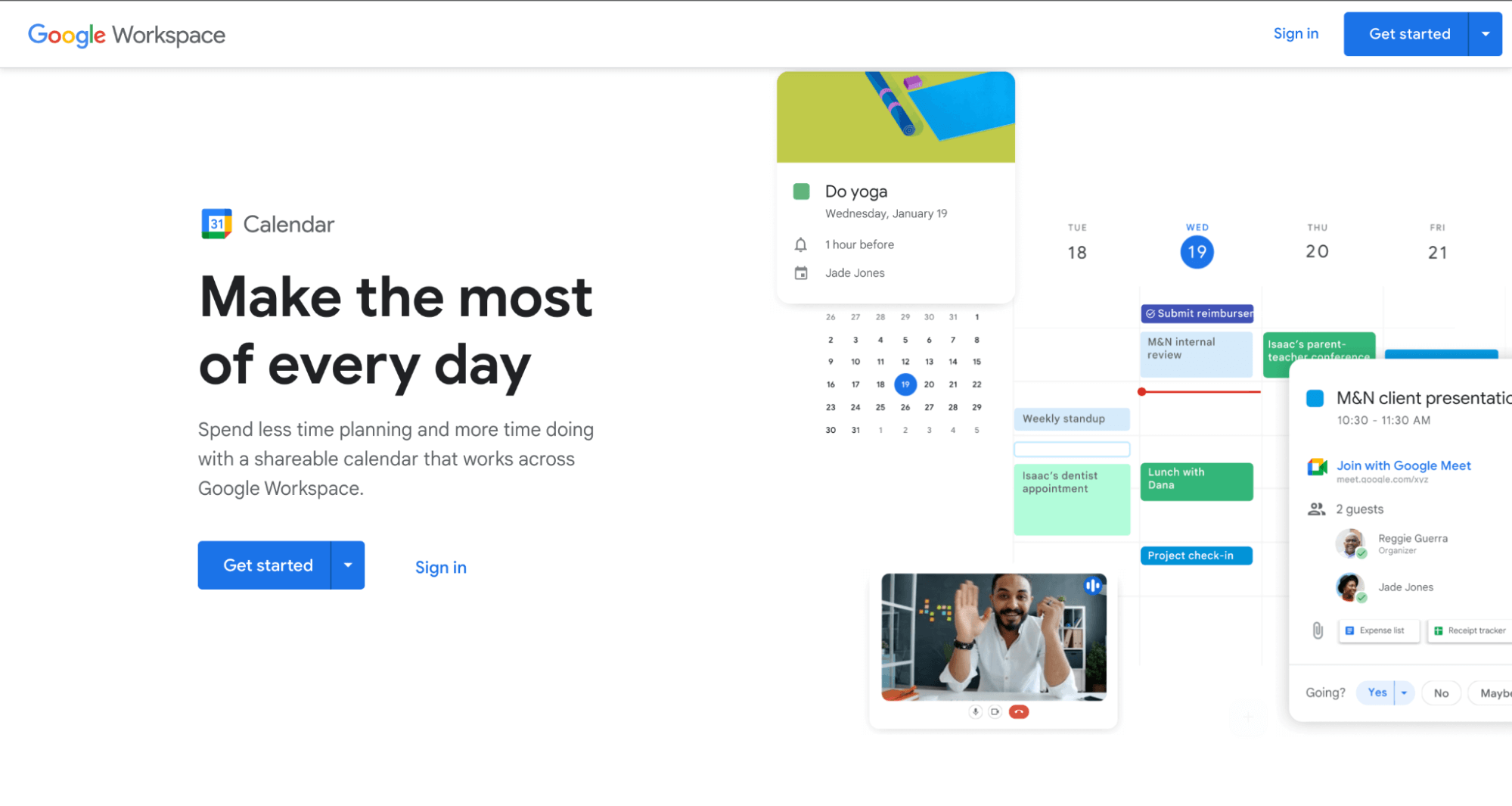 |
Google Calendar has a built-in meeting scheduler that lets you book meetings with other people who use Google Calendar. Anyone with a Google account can use this free booking tool.
Meetings booked with the scheduler are immediately added to your Google calendar and help you stay organized and conscious of your time.
To schedule a meeting in your Google calendar, select the "Create" button in your calendar app and choose "Event" from the dropdown. Once you fill in the required information, invitees will be notified of the meeting request via email.
Even though the Google Calendar scheduler is free, it doesn't offer enough capabilities and flexibility for business use. For example, the scheduler can’t warn you of a potential scheduling clash and may not work with people who don't use Google Calendar.
Key features
Here are some of the key features of the Google Calendar scheduler:
- Send out meeting invites and reminders
- Get notified if someone rejects your meeting invitation
- Connect seamlessly with other workspace apps
- Accept or decline meeting invites within your email
Aside from these features, there are advanced features that people on paid Business and Enterprise plans can enjoy. They include:
- Combine multiple Google calendars in a single view
- Get insights into how you spend your time
- Get a booking page and other appointment-scheduling features
- Integrations
- All Google Workspace apps, like Google Drive, Google Docs, and Google Meets
Platforms
- Web applications
- iOS and Android
Pricing
It's free to use the basic version. However, paid Google Workspace users get access to premium scheduling features.
Here’s what the software looks like on the inside:
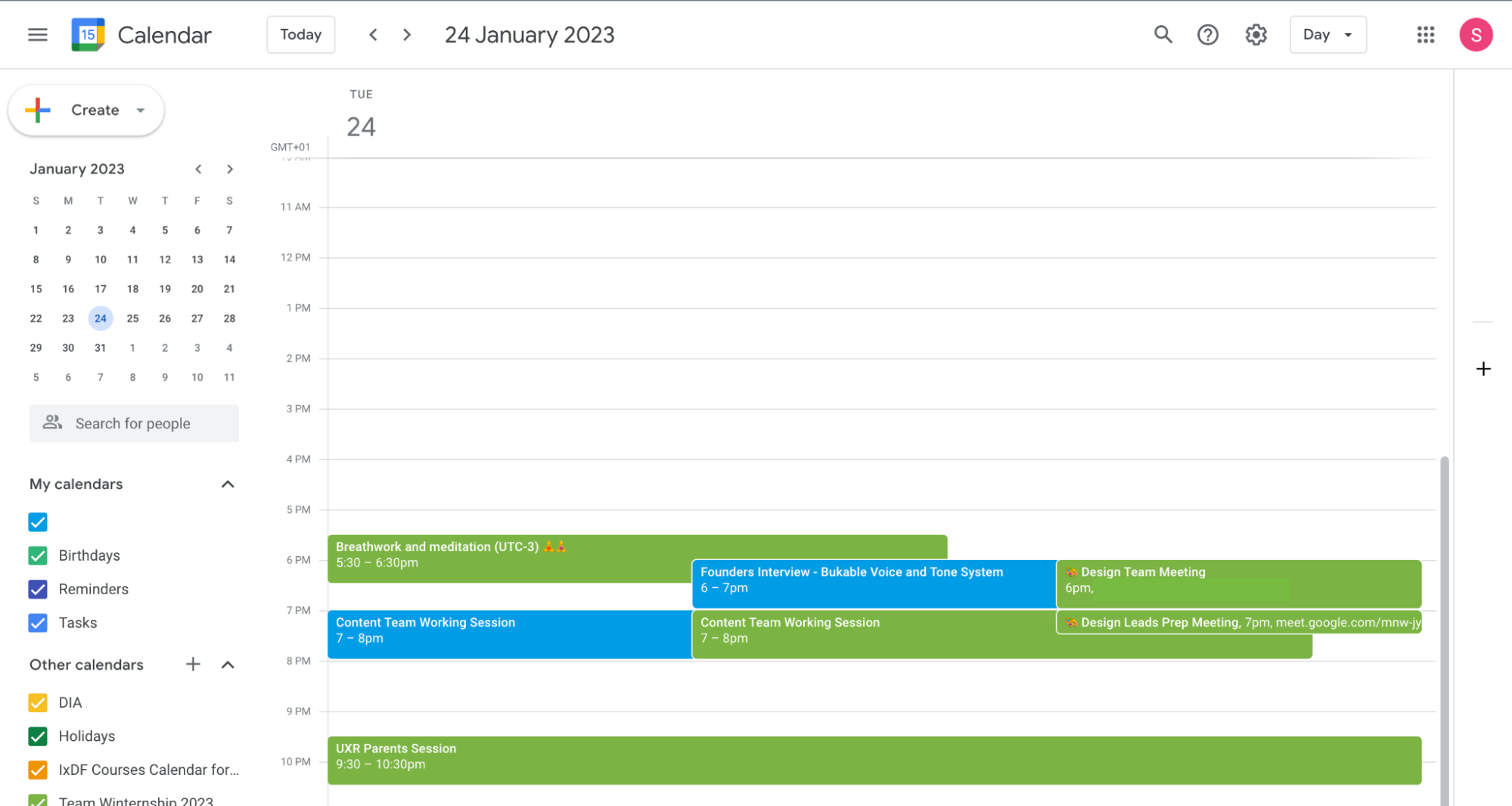 |
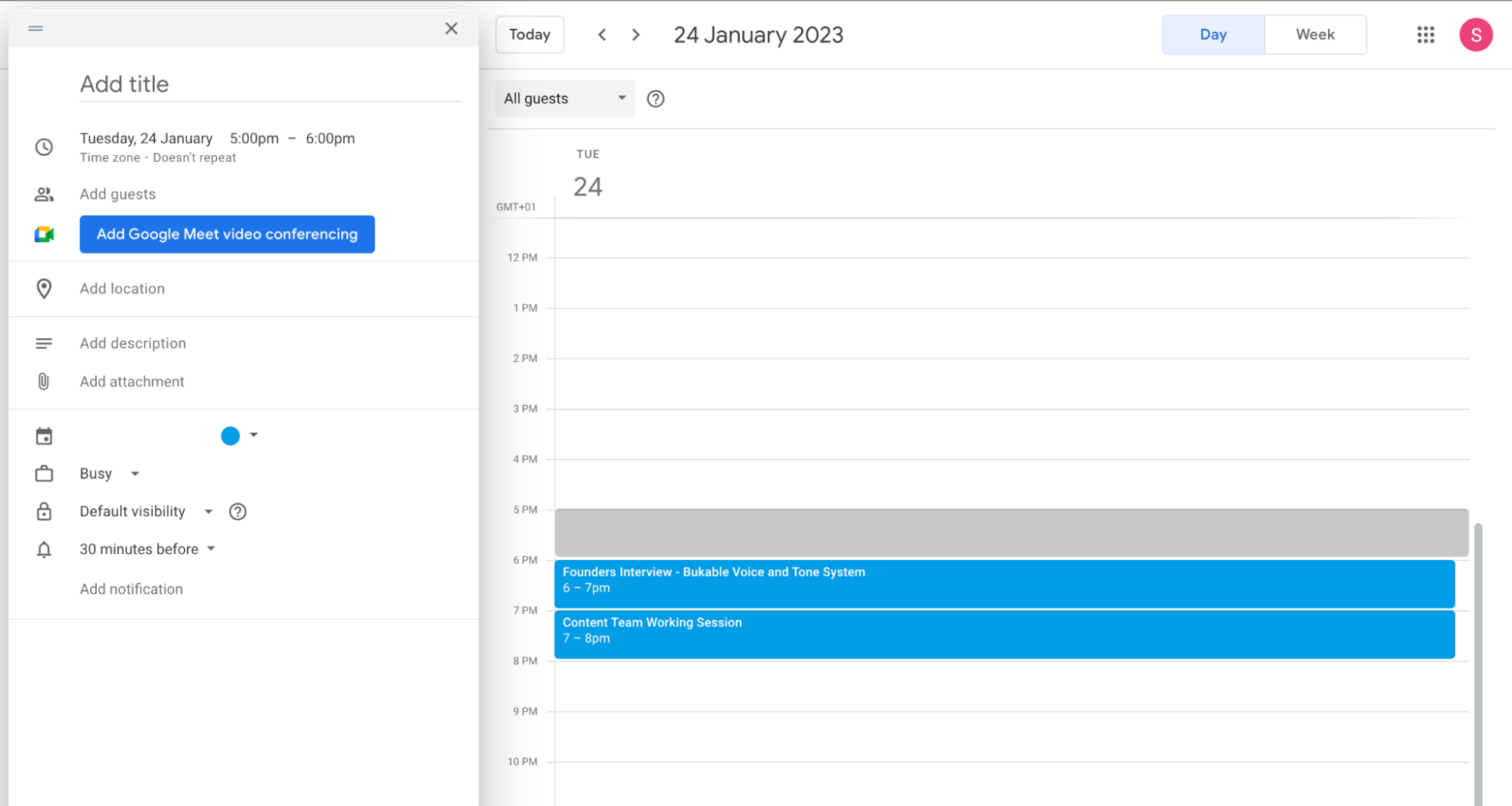 |
5. Microsoft Outlook
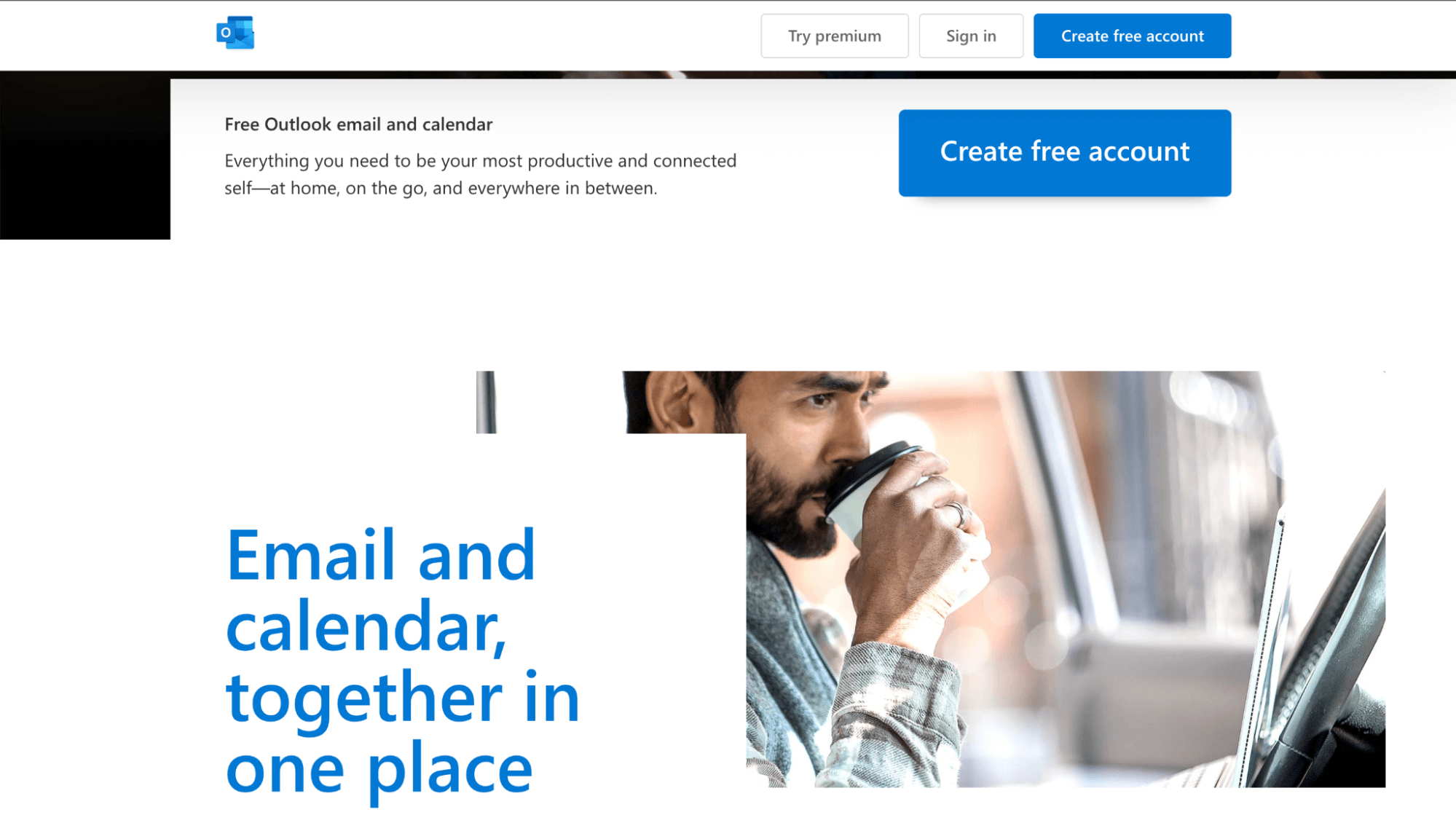 |
Microsoft Outlook calendar is one of Microsoft 365's productivity apps and comes with a scheduling tool. The scheduler app lets you choose any time slot in your calendar and set up an appointment, meeting, or any other event.
Like Google Calendar, the Outlook calendar scheduler works best within teams that all share the same workspace account. You can set up a team calendar that lets you view the availability of everyone in the group.
Like its Google counterpart, the Outlook scheduler may not be flexible and may be limited in functionality. For example, it can't show the availability of people outside your team, like your clients and other work teams who don't use Outlook.
Key features
The Outlook Calendar scheduler lets you:
- Create and manage appointments, meetings, and events
- Share your calendar and availability with others on your team
- Send reminders about upcoming events
Integrations
The Microsoft Outlook scheduler integrates with all Microsoft 365 apps, including OneDrive, Microsoft SharePoint sites, and Microsoft Teams.
Pricing
The Microsoft Outlook calendar is free for anyone with a Microsoft Outlook account.
Here's an inside glimpse of the Microsoft Outlook calendar:
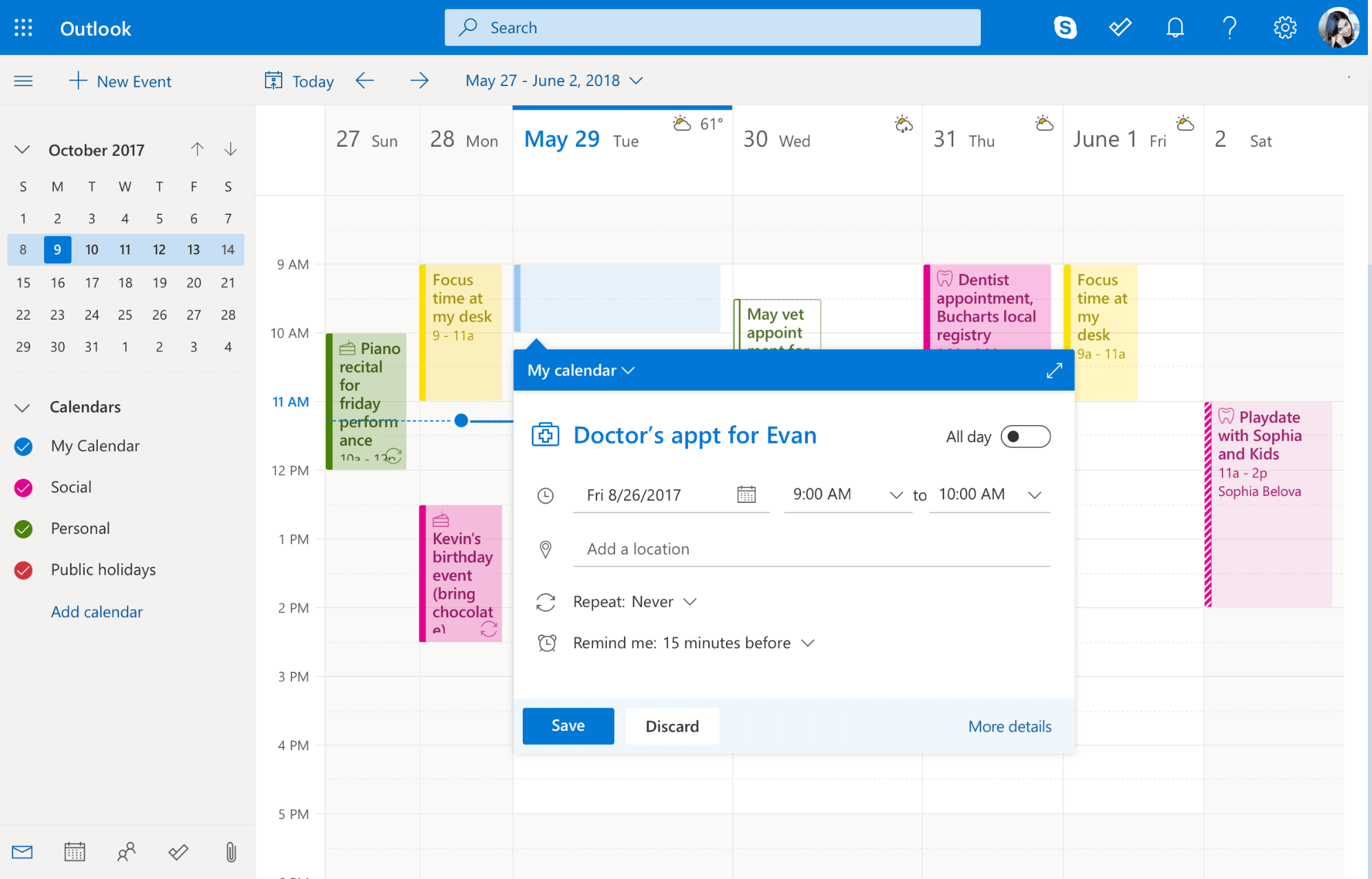 |
Conclusion
All the tools we've reviewed offer one value or the other. But the key to choosing the best meeting scheduler lies in comparing what your team needs from a scheduling tool with what each one offers.
You'll probably settle for Google or Outlook calendar scheduler if you're looking for a free, basic tool that can schedule and send invites for in-house meetings.
But if what your team needs is a robust meeting scheduling tool that fits seamlessly into their current workflow, offers custom integration with their critical work tools, and uses AI to help them organize their day and increase their overall productivity, Motion is the clear lead.
Calendly and Doodle are also great tools, but Motion is more customizable, easy to use, and offers overall task and calendar management.
But don't take our word for it. Start a free 7-day Motion trial today.





